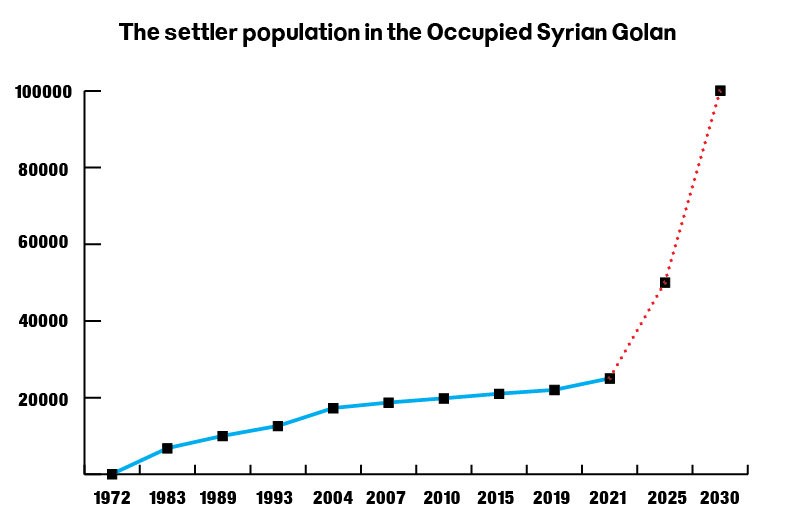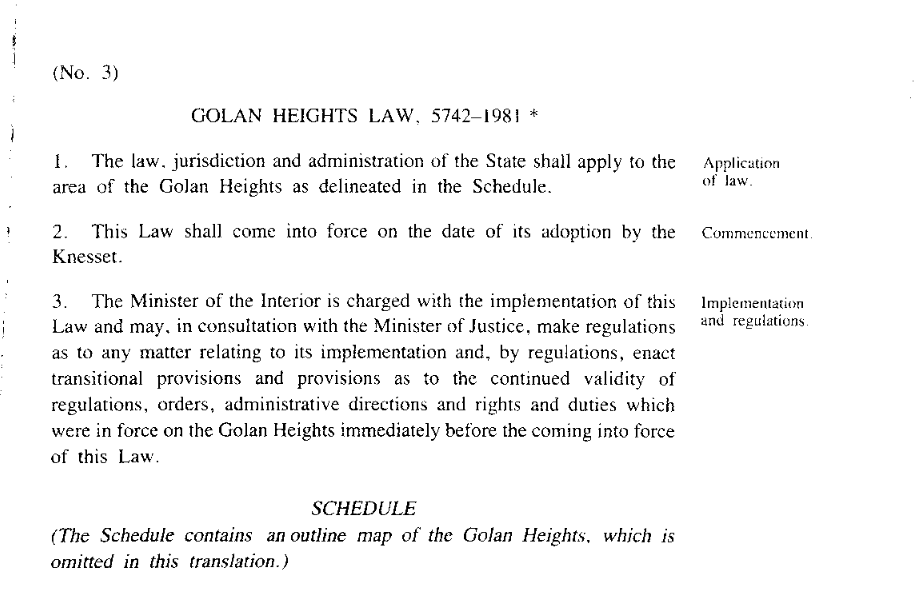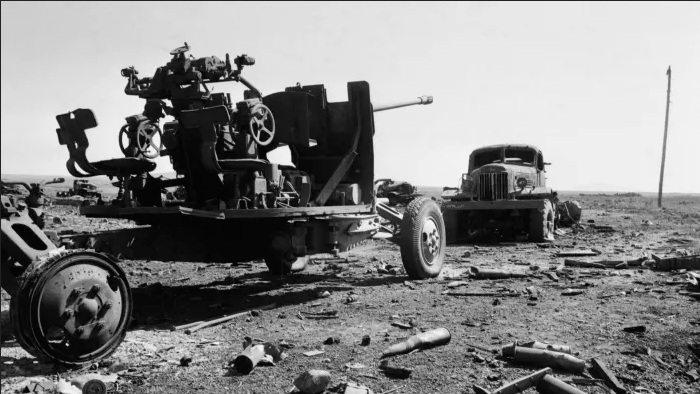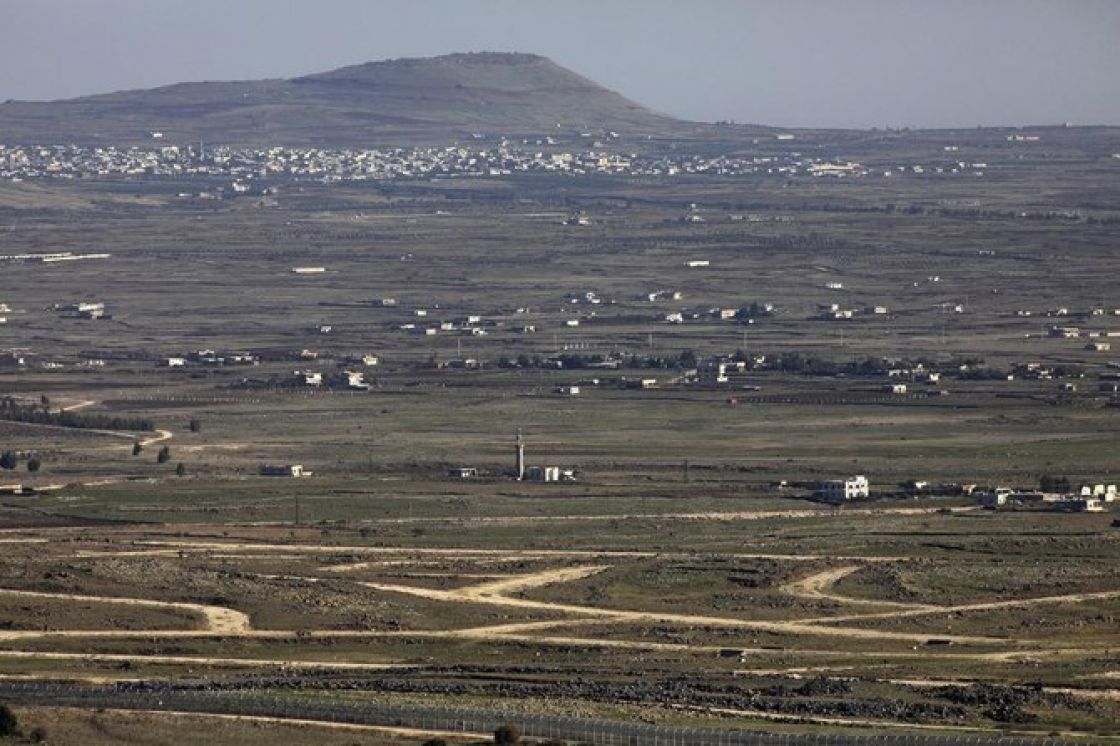- Articles
- Posted
Three Distinct Historical Phases “Israeli” Policy Towards the Occupied Syrian Golan
The Golan was and remains one of the most important issues for Syrians. Just as it is an integral part of Syria’s geography and sovereignty, it has also become an integral part of the solution to the Syrian crisis and of the region’s future. “Israel” along with the US are well aware of this, which can explain the historical development of their approach to the Golan issue, which we will review herein.
1967 Occupation of the Golan – 1981
One of the consequences of the 1967 War was the occupation of the Syrian Golan by the “Israelis”. According to some sources, over 130,000 Syrians were expelled from the region during the war, and were not allowed to return, resulting in many consequences, the first of which was separation of Syrian families between the occupied and non-occupied areas.
On June 19, 1967, the “Israeli” cabinet voted to return the Golan to Syria in exchange for a “peace agreement”, as part of the initial “normalization” efforts. This was rejected after the Khartoum Resolution (September 1, 1967) issued at the conclusion of the 1967 Arab League Summit. The resolution included among other things the famous “Three Nos”: “no peace with Israel, no recognition of Israel, no negotiations with Israel”.
On November 22, 1967, the UN Security Council adopted unanimously Resolution 242, the main point of which was affirming “(i) Withdrawal of Israeli armed forces from territories occupied in the recent conflict; (ii) Termination of all claims or states of belligerency and respect for and acknowledgment of the sovereignty, territorial integrity and political independence of every State in the area and their right to live in peace within secure and recognized boundaries free from threats or acts of force.”
UNSC Resolution 242 was later embraced by UNSC Resolution 338 (1973), which called for ceasefire among the sides involved in the 1973 War and implementation of Resolution 242.
“Israel” continued for years to offer withdrawing from the Golan in exchange for formal recognition and abandonment of the Palestinian cause, that is, “normalization” of relations with Syria, which was repeatedly rejected.
1981 “Golan Heights Law” – 2019 US Recognition
On December 14, 1981, the Knesset (the “Israeli” parliament) passed the Golan Heights Law, which in effect was an annexation of the Golan by “Israel”. The Law consisted of the following three broad provisions:
“1. The Law, jurisdiction and administration of the state shall apply to the area of the Golan Heights, as delineated in the Schedule.
- This Law shall come into force on the date of its adoption by the Knesset.
- The Minister of the Interior is charged with the implementation of this Law and may, in consultation with the Minister of Justice, make regulations as to any matter relating to its implementation, and by regulations, enact transitional provisions and provisions as to the continued validity of regulations, orders, administrative directions and rights and duties which were in force on the Golan Heights immediately before the coming into force of this Law.”
Internationally, the Law was not recognized, and on December 17, 1981, the UN Security Council adopted unanimously Resolution 497, which decided “that the Israeli decision to impose its laws, jurisdiction and administration in the occupied Syrian Golan Heights is null and void and without international legal effect” and demanded “that Israel, the Occupying Power, should rescind forthwith its decision”.
The international community continued to consider the Golan to be Syrian territory occupied by “Israel”, and the annexation “null and void”. That was until March 25, 2019, when the US became the first (and only) country to recognize the Golan as “Israeli” territory by a proclamation signed by then US President Trump. Many countries issued statements condemning this announcement and the UN Secretary-General Antonio Guterres issued a statement saying that the status of Golan has not changed.
Although until Trump took that step, none of the previous US presidents made such a recognition, his proclamation of recognition has not yet been rescinded by his successor, Biden. In fact, on June 25, 2021, after claims circulated about the Biden administration possibly reversing Trump’s policy change toward the Golan, the State Department tweeted: “U.S. policy regarding the Golan has not changed, and reports to the contrary are false.” This was referenced in a special UN report on violations by “Israel” submitted at the last UN General Assembly meeting in September 2021, which noted that the above tweet affirmed “the new Administration’s continuous support for the recognition of Israeli sovereignty” over “the occupied Syrian Golan”.
The Settlements in the Golan
There is a consensus within the international community that settlements in the Golan (and other parts of Palestine) violate international law, a view that has been confirmed by the various UNSC resolutions, including Resolution 446 (1979), which states among other things “that the policy and practice of Israel in establishing settlements in the Palestinian and other Arab territories occupied since 1967 have no legal validity”. The resolution also called “once more upon Israel, as the occupying Power, to abide scrupulously by the Geneva Convention…, to rescind its previous measures and to desist from taking any action which would result in changing the legal status and geographical nature and materially affecting the demographic composition of the Arab territories occupied since 1967, …and, in particular, not to transfer parts of its own civilian population into the occupied Arab territories.” It should be noted here that this resolution was adopted by 12 votes, and three abstentions: Norway, the UK, and the US.
“Israeli” settlements in the Golan began almost immediately after the 1967 War, with the first one reportedly founded in July 1967. By 1970 there were reportedly 12 settlements, and by 2015 there were 33 settlements (according to an OHCHR report dated March 9, 2015). In the September 2021 UN Report referenced above, the number of settlements in the Golan had reportedly reached 33, with nine other ones under development and expansion.
According to multiple sources, the “Israeli” settler population was: 77 in 1972, 6800 in 1983, 10,000 in 1989, 12,600 in 1993, 17,265 in 2004, 18,692 in 2007, 19,797 in 2010, 21,000 in 2015, 22,000 by 2019, and about 25,000 at the end of 2021.
On December 26, 2021, the “Israeli Knesset” approved a plan to double the number of settlers in the Golan over five years. When the announcement was made, according to one of the many articles on the matter, “Israeli” prime minister, Naftali Bennet said to the ministers: “This is our moment. This is the moment of the Golan Heights… After long and static years in terms of the scope of settlement, our goal today is to double settlement in the Golan Heights.” The plan aims to double the number of settlers by 2025 and reaching quadruple the number by 2030 to reach 100,000 (source).
The following graph illustrates the settler population to date and for the next ten years according to the plan:


The Occupation’s Economic Exploitation of the Golan
Occupying the Golan, expelling its original inhabitants, and changing its demographic with illegal settlements are not the only violations that “Israel” has been committing for decades in this Syrian region. Economic exploitation and vile economic policies have been another facet and one of the many illegal activities by the “Israeli” occupation in Golan (as is the case in the Palestinian occupied territories as well). In addition to having direct adverse effects on the remaining local original population, these activities also have indirect adverse effects on them through the adverse and harmful environmental and ecological effects.
One such example is the building of wind farms in the Golan, which started in 1992, by building a wind farm that operates 10 wind turbines close to the Syrian border. In 2008, the company that built the first wind farm was granted a license to build a wind farm spread over 140 km of the Golan with about 150 wind turbines.
Not coincidentally, talk about expanding and developing wind farms increased drastically in 2019, and with a project adding up to 31 wind turbines in the Golan. An article in “Times of Israel”, published in October 2019, looked at the effects this could have on the local population and their livelihoods, in addition to their reactions to these projects and their effect on their lives, especially agriculture, which is their main source of livelihood.
At the end of last year, it was reported that the “Israeli” ministry of defense has signed a deal for the installation of up to 41 wind turbines in northern Golan. Several environmental groups have opposed and criticized the project for several reasons, in large focusing on the adverse effects on the surrounding environment.
According to an April 2020 statement by a human rights group, the wind farms have been built so far and the ones in planning will be built “on agricultural lands, largely apple and cherry orchards, owned by the Syrian residents of the remaining villages in the occupied Golan…nearly a quarter of the agricultural land that Syrians still control in the occupied Syrian Golan”. At the time, the project was for 32 turbines “approved by Israel’s Cabinet on 12 January 2020” despite being “hundreds of objections submitted by Syrian agriculture cooperatives and individuals”.
It is known that these kinds of projects certainly have an adverse effect on the Syrian population’s livelihood, as there will certainly be effects on these orchards’ productivity and usability, including the effect of the shadow created by these wind turbines. The above statement notes that “according to experts on the fields of agriculture, renewable energy, environment and physics, the project will also lead to irreparable destruction of their traditional agriculture economy of apples and cherries.”
The statement also notes that such project “would have serious consequences for the health and safety of Syrian communities as a result of dangerous exposure to infrasound and flickering. Thus, Syrian farmers and civilians who spend much of their time in the agricultural fields on which the project will be built, and where hundreds of small houses are spread, will be vulnerable to these health impacts, and will be forced to abandon their agricultural lands.”
The UN September 2021 report referenced above also took note of the “wind turbine project” and that the “45 turbines are being erected over an area of 6000 acres of agricultural land belonging to the Syrian population”. The report noted that this also shows “Israel” implements its policies “ignoring the health and environmental risks to the population and impact on their livelihoods.”
Furthermore, according to Al-Marsad, a local human rights organization in the Golan, “Israel” implements policies that exploit the natural resources of the area and encourage establishing industries in it within its policy to increase the settler population. According to the group, “The Occupied Syrian Golan is a rich volcanic plateau with extremely fertile soil. The region is home to a huge variety of valuable natural resources…. Since the occupation began, the Israeli authorities have aimed to implement policies which control the valuable resources in the region, in particular the land and the water. In recent times, this has manifested itself through Israel’s encouragement of the establishment of industries and businesses in the region, which exploit these natural resources for commercial gain” and to attract more settlers each year.
The Golan: Three Phases
Looking merely at the graph of the number of “Israeli” settlers in the Golan over time, allows for a preliminary conception of how “Israel” has dealt with the issue according to each historical stage.
- From 1967 to 1981: there was no serious or widespread settlement movement in the Golan. That was within a specific consideration that the Zionists still hoped to drag Syria towards a form of servile “peace”, in and around which Egypt and Jordan engaged through Camp David and Wadi Araba. In this sense, the Golan was dealt with during this period as a temporary hostage in “Israel’s” hands, with no intention of doing anything about it other than keeping it until the time comes to “sell” it to its owners.
- From 1981 to 2019: With the “Israeli” Knesset passing what it called the Golan annexation law, the Zionist policy took another turn, where a serious increase began, but over a long period of time, not only for the number of settlers in the Golan, but also for projects aimed at sabotaging the presence of Syrians in their land through destroying their agriculture and the attempt to impose an “Israeli” identity on them, within a long-term goal of permanently integrating the Golan.
- 2019 to the present: Official “Israeli” statements have shown that the long-term integration policy, and the attempt to “change the face of the Golan” (according to what Naftali Bennett said last October), has failed. In addition, the expected massive acceleration in increasing the number of settlers, which prompted the plan the adoption of which was announced at the end of last month, all of this indicates a new stage in the way the Zionist is dealing with the Golan issue.
The Change and its Explanation
Kassioun’s issue #1052 editorial, published on January 10, 2022, and titled “The Syrian Golan, the Indicators of Complexity and a Solution”, stated the following:
“The more important explanation for this change starts exactly from both the Americans and the ‘Israelis’ comprehension of the reality of the general American retreat, and the necessity of the American withdrawal from the entire region, the most affected by which will be the main American base that Washington will leave behind: ‘Israel’.
More specifically, the American withdrawal will be accompanied by a redrawing of the entire region on the basis of the new actual balances, including ending the Syrian dilemma and opening the door to a comprehensive political solution.
This imposes, from the ‘Israeli’ point of view, a preemptive fortification towards the near future by complicating the conditions for moving towards it. That is, by complicating the terms and conditions of a political solution in Syria, which ‘Israel’ knows very well will, at a specific stage, reach the point of ending the ‘Israeli’ occupation of the Golan.
In other words, ‘Israel’, while working indirectly and sometimes directly with those who reject the political solution and those who reject UNSC Resolution 2254, is working on fortification against the possibility of its implementation by complicating and raising the cost of its exit from the Golan, with the hopes that this exit will turn into a bargaining chip over the future of Syria itself.”




